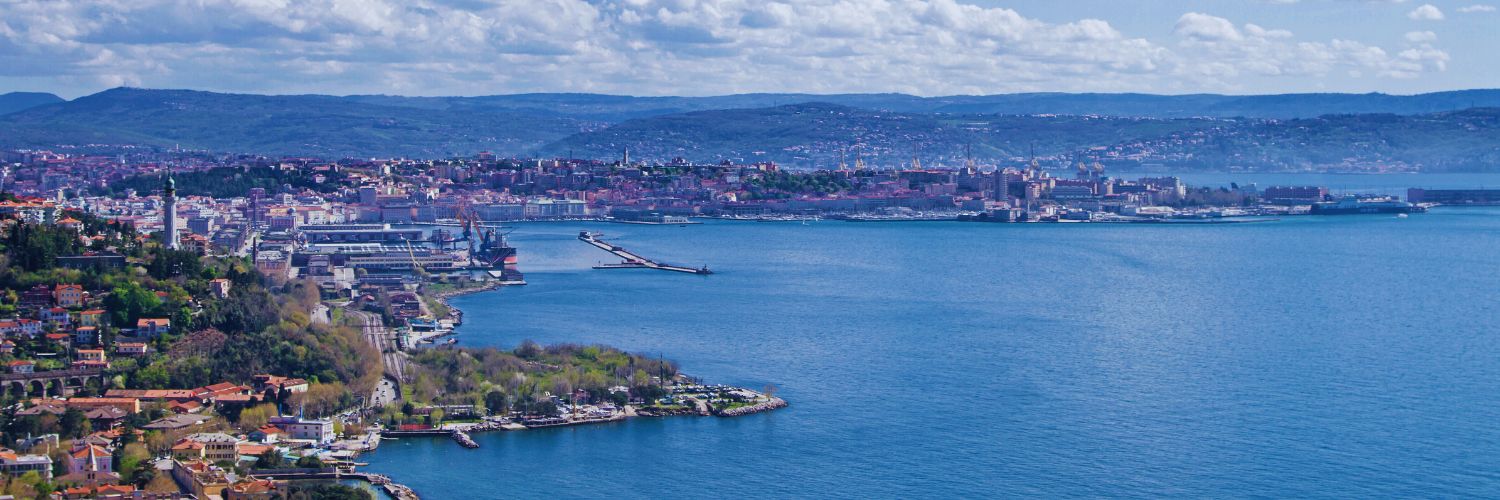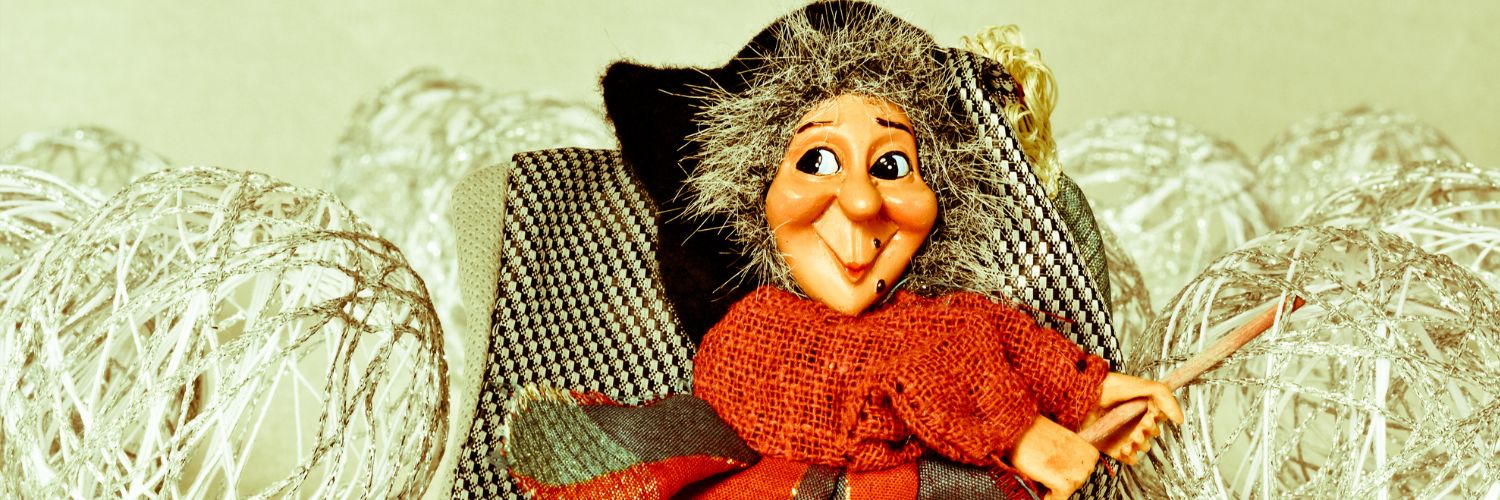Unveiling the Mysteries of Krampus: Austria's Unique Christmas Tradition
As the holiday season descends upon Austria, the air is filled with the sweet scent of gingerbread and the joyful melodies of carolers. However, amidst the festive cheer, there lurks a shadowy figure, a counterpart to the jolly Santa Claus: The Krampus.
After Befana, the kind witch who brings presents in Italy, we will take another deep dive into the colorful world of Christmas Traditions around Europe. Deeply rooted in centuries-old folklore, Krampus is a mythical creature that has become an integral part of Austrian Christmas traditions.
In this blog post, we will delve into the dark and intriguing world of Krampus, exploring its origins, cultural significance, and the unique ways in which Austrians celebrate this period of the year, so if you decide to spend your holidays in this region, you will from now on have a deeper understanding about why a goat-like creature is seen running around in fairytales and Christmas fairs alike.
The Origins of The Krampus
The legend of Krampus finds its roots in pre-Christian Alpine traditions, where he is believed to be a companion of Saint Nicholas. While Saint Nicholas rewards good children with gifts and treats, Krampus is tasked with punishing the naughty ones. Depicted as a horned, anthropomorphic creature with a long, pointed tongue and cloven hooves, Krampus was thought to embody the darker aspects of the holiday season.
The Krampus is not merely a character in a myth, it represents a cultural phenomenon that has persisted for centuries. In Austrian folklore, the night of the 5th of December, known as Krampusnacht, is when Krampus is said to roam the streets. Locals participate in parades, donning elaborate costumes that bring the creature to life. The sight of horned figures clad in fur and chains sends shivers down the spines of both children and adults alike but also lights up a sense of excitement and nostalgia, which is a very weird combination indeed, highly Germanic in its duality but we absolutely love it!
Wait, but what are the Perchten?
The beings known as Perchten bear a resemblance to devils, and their name likely originates from the legendary figure "Perchta." Alternatively, another theory suggests that the name is derived from Epiphany. Perchten are not solitary creatures; instead, they typically appear in groups referred to as "Passen."
Emerging from central Europe and traversing through the ages, Perchten runs stand as a tradition deeply linked with the Alpine regions and the winter ritual of expelling malevolent spirits. The authenticity of the traditional costumes is paramount - suits are meticulously handwoven from corn leaves, harvested in late summer from Northern Italy, and then carefully stitched together to craft the broad, rustling attire that performers must be securely fastened into, weighing up to 25kg each.
The hand-carved masks and headgear, adorned with horns designed to pierce the soul, boast faces that could haunt your nightmares; their weight can reach a substantial 30kg each, depending on size. Attached atop the suits and headgear are metal drums and hefty bells, creating a cacophony that is both magnificent and wild, beyond imagination.
As the sun sets, fires are kindled in the town center amid the clamor of bells, horns, and the earth-shaking stomps of the Perchten devils.
Perchten and Krampus are not one and the same but in recent times, these figures have intertwined and many times Krampus appears alongside the Perchten in celebrations.
The Role of Krampus in Modern Celebrations

While Krampus has ancient origins, the tradition of celebrating Krampusnacht has experienced a resurgence in recent years. In cities and villages across Austria, people come together to revel in the eerie festivities. Parades feature not only Krampus but also other mythical creatures, creating a surreal and captivating atmosphere. Spectators can witness the intricate craftsmanship of the costumes and masks, each designed to evoke a sense of fear and fascination.
The Krampuslauf, or Krampus Run, is a central element of the celebrations. During these runs, participants, often members of local Krampus groups, take to the streets, showcasing their elaborate costumes and frightening masks. The clattering of chains, the ringing of bells, and the eerie growls of the Krampus figures add to the spine-chilling spectacle.
Note: The Krampus Run is the name of the event when the Krampus emerge in the Christmas Market, and they...well, run! They even start chasing members of the spectators so be prepared to have your running shoes on!
Where to experience the Krampus and Perchten Runs
If you would like to experience this firsthand, there is no better place to do so than Salzburg. The wild jangling of bells, shaggy pelts, curved horns, and terrifying masks create an unforgettable scene when Krampus and Perchten run down the street. Growling, and half-dancing, they leave every spectator just a little unsettled. Krampus and Perchten parades are a distinctive part of Salzburg's Christmas season, alongside the famous Christkindlmarkt (Christmas Market) and the almost meditative Advent Singing.
The Salzburg Krampus run is a free event, but it can get quite crowded. Nevertheless, it's absolutely worth experiencing. Just be prepared for the possibility of being chased all in the spirit of good fun. This event typically occurs around St. Nicholas Day (6th of December) in the Altstadt of Salzburg, taking place at night after sundown (usually around 5 pm), lasting approximately an hour. Keep an eye out for signs around the city announcing the event, and you can also check online for dates and schedules in advance.
Innsbruck is another great place to experience this first-hand, the gorgeous mountain town has the following schedule for the 2023 Krampus and Perchten Runs:
- Krampus creatures of East Tirol roam across the historic old town on the 4th of December, 2023, 6:30pm Perchtenlauf Run in Maria-Theresien-Street on the 7th of December, 2023, 6:00pm
- Germany’s Bavaria region historically is part of this Alpine tradition so another great bet would be heading to the Christmas Market in Munich. The event is known for hosting famous Krampus Runs, which takes place on Sunday, the 10th December 2024, at 3:00 pm sharp in Marienplatz, at the central Monegasque square.
The fascination with Krampus has extended beyond the borders of Austria, finding a place in popular culture around the world. The creature has become the subject of movies, books, and even themed events in various countries. Krampus has evolved from a regional tradition to a global symbol of the darker side of the holiday season.
The legend of Krampus, with its ancient origins and modern-day celebrations, adds a unique and captivating dimension to the rich tapestry of Austrian Christmas traditions. As the Krampusnacht parades continue to captivate audiences, one can't help but appreciate the mysterious allure of this mythical creature that has firmly secured its place in the folklore of the Alpine region.

 Emily Williams
Emily Williams
The perfect holiday in Friuli-Venezia Giulia - We spent our vacation on a houseboat!
As the first signs of summer descended upon us, my wanderlust-filled heart yearned for adventure, and what better way to satisfy it than by embarking on a journey to the enchanting region of Friuli Venezia Giulia in northeastern Italy? With its stunning landscapes, rich cultural heritage, and mouthwatering cuisine, Friuli Venezia Giulia promised a summer holiday like no other, and it did not disappoint.
Read more
 Emily Williams
Emily Williams
Christmas Stollen Bread, Lebkuchen and German Mulled Wine
During the last couple of weeks, we did some mental traveling around Europe and got acquainted with the funniest, weirdest, and most heartfelt Christmas holiday traditions, such as Tió de Nadal in Catalonia, la Befana in Italy, and Krampus from Austria. Our last stop will be Germany, where besides knowing how to have a great time, people seem to know how to fill their bellies while spending time at Christmas Markets!
Read more
 Emily Williams
Emily Williams
Meet La Befana - Discover Italy's Epiphany Tradition
In the second article about European traditions about and around Christmas time, we will get closely acquainted with an Italian witch who brings presents and joy, instead of the usual…you know, more evil connotations of the word.
Read more